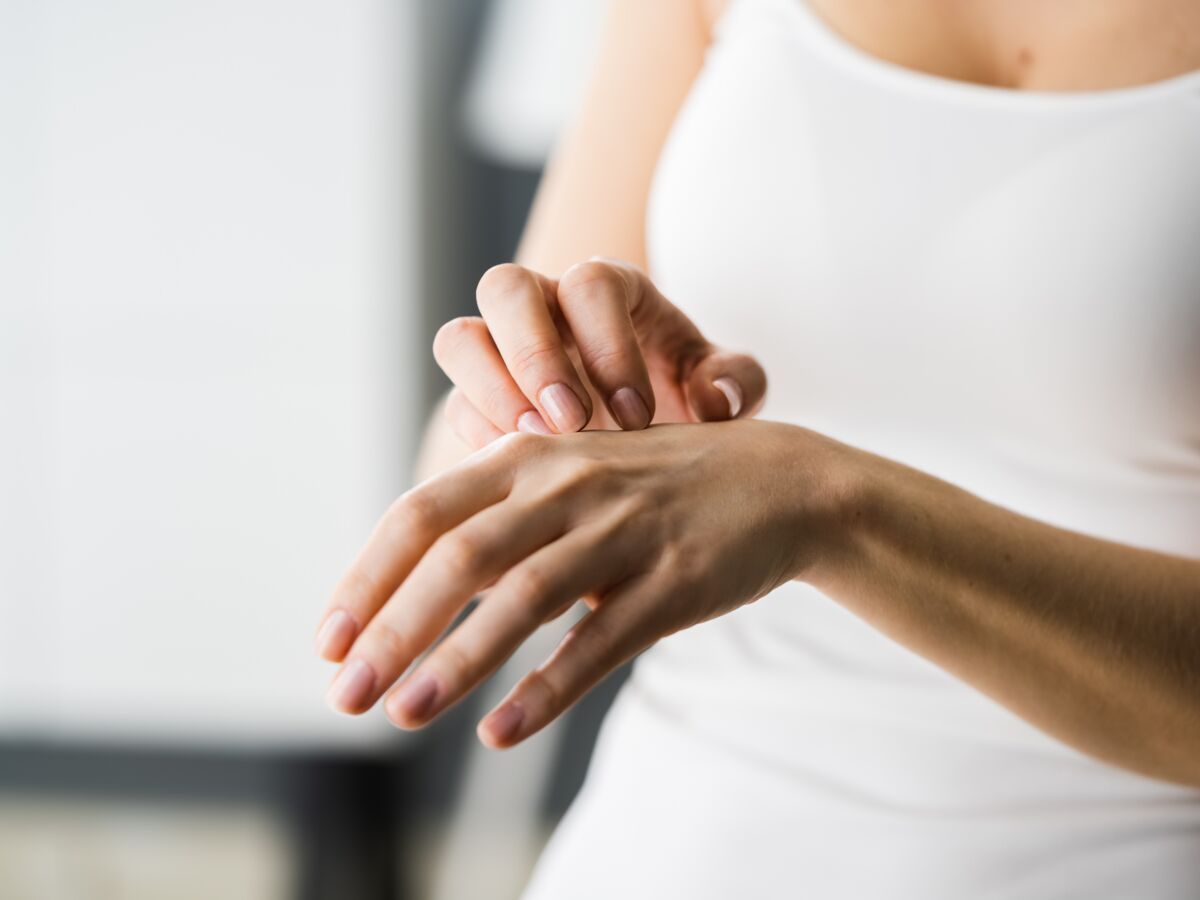Dyshidrosis is a type of eczema that affects the feet and hands. How does this skin disease manifest and how can it be treated?
What is dyshidrosis of the hands and feet? Definition
Dyshidrosis is a form ofeczema that affects the soles of the feet and the palms of the handssometimes reaching the extremities and lateral surfaces of the fingers.
Dyshidrosis or eczema, the difference?
Unlike classic eczema which appears in the form of patches, dyshidrosis is characterized by formation of small vesicles filled with water or in a dry formwhich are manifested by relapses, sometimes interspersed with periods of partial remission. “Dyshidrosis is itchy and can also cause burning sensations”, explains Mostafa Rafaa, dermatologist. Symptoms that can be similar to those of fungal infections, especially on the feet.
But rest assured, dyshidrosis is not necessarily chronic: it is possible to have a surge in your life and not have any more. Similarly, people who have eczema do not automatically have dyshidrosis.
Do you know the difference between dyshidrosis and dart ?
If they look alike, these two dermato concerns do not require the same treatments.
The causes: how do you get dyshidrosis?
Summer is the best season for development of dyshidrosis, although some have outbreaks in winter. In effect, the main cause of this condition is excessive sweatingi.e. heavy perspiration. “It can also appear when handling chemicals or materials such as nickel”adds the dermatologist, who explains that tobacco can have its responsibilities, specialists having often observed that among people who have dyshidrosis, many smoke.
How do you know if you have dyshidrosis? Symptoms of this form of bullous eczema
Dyshidrosis is a form of eczema called “bullous”which is located on the hands and feet, and which is characterized by:
- the presence of small blisters on the hands and/or feet
- the presence of transparent “bubbles” on the hands and/or feet
- itches
- a burning sensation in the affected area
- a red area that appears around the blisters, caused by inflammation
Treatments: how to treat dyshidrosis?
Embarrassing and debilitating, dyshidrosis should not be taken lightly and should be treated like eczema.
With which creams to treat it?
A cortisone cream is part of the usual treatments. “What we advise patients is to hydrate their skin as much as possible, whether for prevention or when the skin problem is there”, explains the specialist. Hydration can limit the aggressive effects of corticosteroids, such as with aloe vera gel or conventional moisturizing hand creams. Healing creams are also used, especially if the water blisters are punctured, with water paste or vitamin E.
The mistake, however, is to try to sanitize the blisters or disinfect them because the products tend to dry out the skin, just like many cosmetic products such as foaming gels which weaken the skin.
In the case of excessive sweating, treatments exist such as iontophoresis. This technique consists of passing a weak electric current through a basin of water where the patient immerses his hands and feet. Thus, the functioning of the sweat glands is blocked to regulate sweating of the feet and hands.
How to avoid this palmoplantar dermatosis?
Mostefa Rafaa recalls that in prevention, it is important to treat all infectious outbreaks on the hands and feet such as fungal infections. Also, dry your hands and feet well, especially when you sweat a lot, because humidity favors the appearance of dishidrosis. The dermatologist also advises not to wear fancy jewelry which is often made with metals that promote its appearance.
Attention ! If you have pimples on your hands and feet, and you live with a young child, it could be hand-foot-mouth syndrome!
Read also :
⋙ 7 natural treatments for eczema
⋙ Acne, psoriasis, eczema… 5 essential oils against skin problems
⋙ Skin problems, lack of tone, lower immunity… how to choose the right vitamins?
